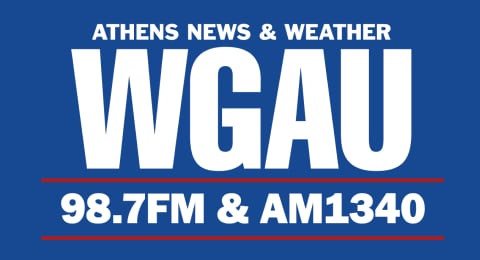LAHAINA, Hawaii — (LAHAINA, Hawaii) -- Climate change may have amplified the conditions that led to the deadly inferno on the Hawaiian island of Maui but it cannot be blamed entirely.
An unknown spark quickly set parts of the island ablaze on Aug. 8, sending flames fueled by a combination of strong trade winds and a landscape parched by drought conditions through the historic Lahaina district and people's homes.
On Sunday, Hawaii Gov. Joshua Green likened the level of devastation that occurred as a consequence of climate change.
"That level of destruction, and a fire hurricane, something new to us in this age of global warming, was the ultimate reason that so many people perished," Green said.
Not only do "fire hurricanes" not exist, but climate change can't be blamed for the number of people who died in the wildfires.
Globally, climate change "nudged" the conditions that contribute to making wildfires more severe, but it is unclear how much of a role that played in the Maui fire event, Gavin Schmidt, director of the NASA Goddard Institute for Space Studies, told ABC News.
Moreover, wildfires have the "lowest confidence" among natural disasters that researchers attribute to climate change, according to the National Oceanic and Atmospheric Administration.
"We should not look to the Maui wildfires as a poster child of the link to climate change," Daniel Swain, a climate scientist at the University of California, Los Angeles, said Friday in a YouTube stream.
Swain instead pointed to the wildfires ravaging to the north in Canada and the country's unprecedented start to its wildfire season.
The weather and environmental factors involved with the Maui wildfire event are more complex, Swain said. Natural climate variability in Hawaii is very large and picking out the human-induced climate change signs is really difficult, Abby Frazier, a climatologist at Clark University in Worcester, Massachusetts, told ABC News.
The main factor driving the fires involved the invasive grasses that cover huge parts of Hawaii, which are extremely flammable, Frazier said.
High pressure had created strong trade winds across the eastern Pacific Ocean when the fires sparked. Hurricane Dora, which passed 750 miles south of Hawaii, also strengthened the pressure gradient across the Pacific Ocean.
Peak wind speeds were measured up to 67 mph on Maui, but some video taken during the height of the event appears to suggest that gusts were even higher.
Although drought contributed to the severity of the fires, anthropogenic climate change is not to blame for Maui's drought conditions either. Drought is not uncommon in Hawaii, which is currently in its dry season. Parts of Maui, including much of the island's west coast, are currently under severe drought, according to the U.S. Drought Monitor.
In August 2022, Hawaii’s drought numbers were much higher, with parts of Maui even reaching exceptional drought, the top category of concern.
Most of Hawaii’s rain comes in the wet season between October and April. The most recent wet season across Maui was above average for nearly every reporting station on Maui, with Lahaina seeing 116% of normal rainfall between October 2022 to April 2023, according to data from the National Weather Service.
The origin of the fire has not yet been determined but it was likely a human-caused accident boosted by weather and environmental conditions, experts say.
A study published in the International Journal of Wildland Fire last year found that human-caused ignition was associated with a large portion of fires in California between 1919 and 2016.
The researchers also found that the fire spread more quickly because of drought and heat amplified by greenhouse gas emissions.
Lahaina has a similar fire danger as parts of central California, Swain said, and many tourists are not aware that the wildfire potential on the island is not rare.
The way that wildland and vegetation coincide in urban areas likely also played a role in how fast the wildfires spread, Swain said.
ABC News' Stephanie Ebbs, Kenton Gewecke, Max Golembo, Daniel Manzo and Daniel Peck contributed to this report.
Copyright © 2023, ABC Audio. All rights reserved.






